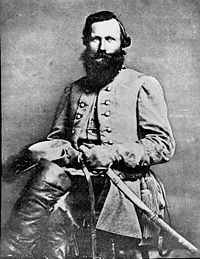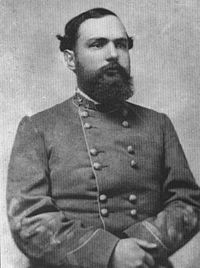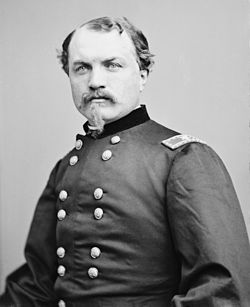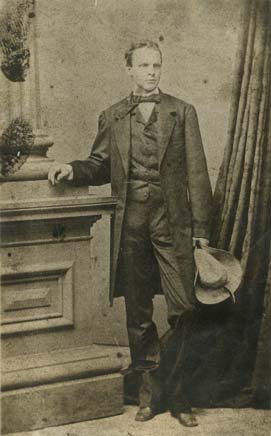On this day in 1863, Union cavalry attack Confederate cavalry at Kelly’s Ford, Virginia. The engageent proved that the Federal troopers could hold their own against their Rebel counterparts, despite their being pushed back and failing take any ground.
In the war’s first two years, the Union cavalry had fared poorly in combat, coming off a poor second to the Rebel horsemen. This was especially true in the Eastern theater, where Confederate General J.E.B. Stuart boasted an outstanding force comprised of excellent horsemen. On several occasions, Stuart

embarrassed the Union cavalry with his daring exploits. During the Peninsular Campaign of 1862, Stuart rode around the entire 100,000-man Union army in just four days, to the great embarrassment of the union generals and President Lincoln. Later that year, he made a daring raid to Chambersburg, Pennsylvania, and returned unmolested to Virginia after capturing tons of much needed supplies and inflicting significant damage. In February 1863, a raid by General Fitzhugh Lee (son of Confederate

commander Robert E. Lee) also left the Federals running in circles in search of the enemy force. Now, in another change of commanders, General Joseph “Fighting Joe” Hooker assumed command of the

Federal Army of the Potomac. He planned to bring an end to the Confederate raids by stopping Stuart’s cavalry. Hooker assigned General William Averell to attack the Rebel cavalry near Culpeper Court

House, Virginia. Averell assembled 3,000 men for the mission, but he left 900 more behind to protect against a rumored Confederate presence near Catlett’s Station. Averell led the rest of his men towards Kelly’s Ford, a crossing of the Rappahannock River east of Culpeper Court House. Fitzhugh Lee learned of the advance and positioned his cavalry brigade, which was part of Stuart’s corps, to block the ford and dig rifle pits above the river.
On the morning of March 17, Averell’s men reached Kelly’s Ford where they quickly found themselves under fire from 60 Confederate sharpshooters. It took only four attacks for Averell’s men to capture the rifle pits and by noon the entire force was across the Rappahannock. Now, Fitzhugh Lee arrived with 800 troopers and two pieces of artillery. As the Confederates approached, the cautious Averell ordered his men to form a defensive line, thus giving the initiative to the Confederates. Lee arrived and ordered his men to attack, but Yankee fire drove them back. He attacked again and was again repulsed. Averell had a chance to win the battle with a counterattack, but instead he withdrew across the Rappahannock River. He later defended his retreat by claiming the arrival of Stuart on the battlefield signaled the possible approach of additional Confederate cavalry.
Averell lost 78 men killed, wounded, and captured during the day’s fighting. The Confederates lost a total of 133 men. Among the Rebel dead was Major John Pelham, perhaps the best artillery officer in

the Confederate army. He happened to be visiting Stuart when the battle began, and rode forward to see the action. Pelham was mortally wounded by a shell splinter as he was observing the Confederate attacks in the afternoon. Although Kelly’s Ford was a tactical Union defeat, it signaled a new phase of the cavalry war in the East. The Yankees were closing the gap with the Confederate horsemen. In the next four months, the Union cavalry fought their Confederate counterparts to a standstill at Brandy Station, Virginia, and then scored a major victory at the Battle of Gettysburg, Pennsylvania. The war was turning in favor of the Union.
To purchase a signed copy of Larry Auerbach’s novel “The Spirit of Redd Mountain”, Click Here
Photo courtesy of wikipedia.com

